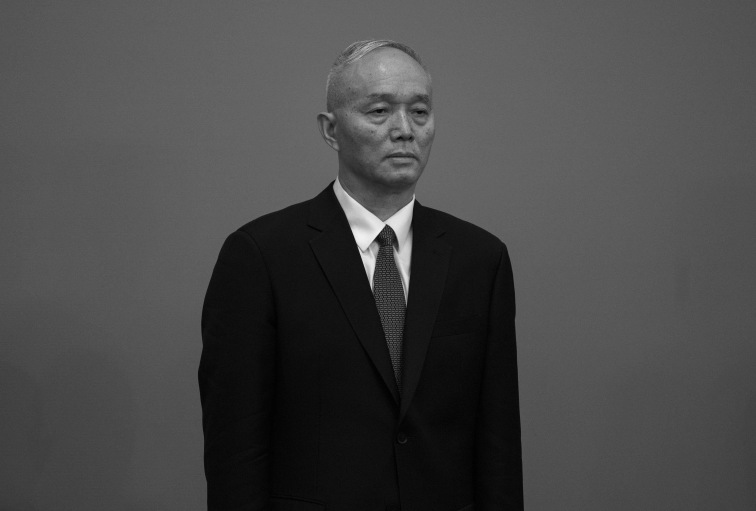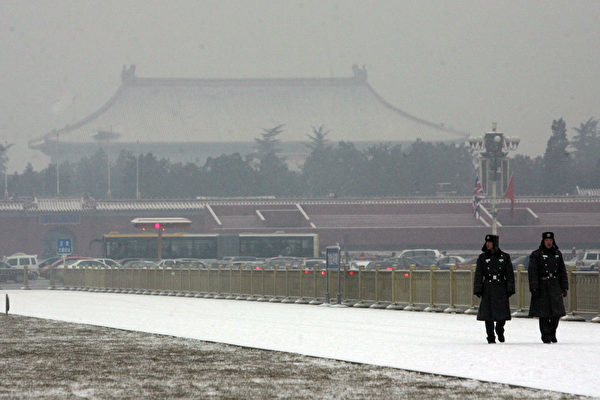[People News] Recently, tensions between China and Japan have escalated sharply. The situation has moved from verbal attacks to a near–armed confrontation. Japan–China relations are heading toward their worst point in the 53 years since the two nations established diplomatic ties. Analysts say that Japanese Prime Minister Takashi Sanae’s “defend Taiwan” comments hurt the face of the Chinese Communist Party (CCP) leader Xi Jinping—nearly a humiliation for him.
On Nov. 18, Japanese officials and CCP officials met in Beijing in an attempt to ease the escalating diplomatic dispute, but no progress was made. Japan rejected China’s demand and reiterated that it would not withdraw Prime Minister Takashi Sanae’s remarks regarding “a Taiwan contingency.” China expressed that the talks were serious and that it was dissatisfied with the outcome.
The officials who met that day were: Liu Jinsong, Director-General of the Asian Affairs Department of the Chinese Foreign Ministry, and Masaaki Kanai, Director-General of the Asian and Oceanian Affairs Bureau of Japan’s Ministry of Foreign Affairs.
On the same day, CCP Foreign Ministry spokesperson Mao Ning confirmed at a regular press conference that China had urged Japan to retract Takashi Sanae’s comments during the meeting.
Japanese Chief Cabinet Secretary Minoru Kihara signaled that Japan had no intention of retracting the remarks. He said at a press conference that these comments “do not change the government’s existing position,” adding that the government hopes issues concerning Taiwan can be resolved peacefully through dialogue.
On Nov. 18, CCTV.com published “Four Questions for the Troublemaker Takashi Sanae,” launching another round of fierce attacks on her, accusing her of erroneous statements and actions regarding Taiwan and historical issues, and claiming that her statements about Taiwan are illegal and invalid.
The disputes between China and Japan originated from a post on X made late at night on Nov. 8 by Xue Jian, the CCP’s Consul General in Osaka. He wrote: “As for that dirty head that sticks itself out forcefully, the only option is to cut it off without hesitation. Are you prepared?”—a veiled threat of “beheading” Japan’s Prime Minister Takashi Sanae.
Xue Jian’s “beheading remarks” were directed at Takashi’s comments the previous day. When asked in the Diet’s Budget Committee what circumstances would constitute a “survival-threatening situation” if the Taiwan Strait were blockaded at sea, she said that if force were used against Taiwan and if a naval blockade were carried out with “warships,” accompanied by other coordinated actions, this could constitute a “survival-threatening situation” allowing Japan to exercise the right of collective self-defense. In simple terms: “A Taiwan contingency means a Japan contingency.”
Subsequently, Takashi’s “defend Taiwan” remarks and Xue Jian’s “beheading remarks” triggered verbal warfare between China and Japan. In just ten days, relations have plunged to freezing point.
Xue Jian’s violent language as a diplomat sparked outrage in Japanese public opinion, with critics saying his remarks “could be interpreted as a murder threat against Prime Minister Takashi, extremely malignant in nature.” Political parties from across Japan strongly condemned Xue Jian’s death threat, calling it an insult to Prime Minister Takashi Sanae and the Japanese people, severely damaging Japan–China relations. They demanded that the Japanese government take strong actions, including declaring Xue Jian persona non grata and expelling him, and raise the issue with Beijing.
CCP Foreign Ministry spokesperson Lin Jian claimed it was merely a personal post by a diplomat, adding that “Japan should not confuse right and wrong but should reflect on its own erroneous actions and remarks.” Lin’s wording appeared to defend Xue Jian. Xue then deleted the post. Takashi Sanae also said she would refrain from making similar remarks.
Takashi Sanae’s pro-Taiwan stance triggered the CCP’s frantic retaliation. Domestically, it stoked nationalist sentiment, incited so-called “patriotism,” and stirred up nationwide anti-Japanese emotions.
On Nov. 12, the CCP state-media social media account “Yuyuan Tantian” not only used a homophone to call Takashi “troublemaker,” but also hurled vulgar insults such as “Was her brain kicked by a donkey?” and “She’s spewing filth from her mouth,” shocking observers.
On Nov. 15, the account continued with another article, “China Is Ready to Implement Substantive Countermeasures Against Japan,” saying “The Chinese people must not be provoked; if provoked, it won’t end well.” The crude insults—“Why don’t you piss and look at yourself?”—again drew attention, openly showing that CCP national-level media has stooped to street-shrew levels of profanity.
Hu Xijin, former editor-in-chief of the CCP’s Global Times, also added to the chaos. On Nov. 13, he posted on X, angrily calling Japan’s Prime Minister Takashi Sanae the “evil witch” who started the provocation. U.S. Ambassador to Japan George Glass joined the fray, counterattacking Hu Xijin. He mocked: “Hu Xijin spent so long helping the CCP in the Global Times that he can no longer distinguish diplomacy from provocation.”
CCP party media also joined in. On Nov. 14, People’s Daily published an article under the pen name “Zhong Sheng,” saying that Takashi’s remarks were “a betrayal of the one-China principle and an open provocation to the post–World War II international order.”
Late on Nov. 13, Chinese Vice Foreign Minister Sun Weidong, “acting on instructions,” summoned Japanese Ambassador to China Kenji Kanasugi. In diplomatic language, “acting on instructions” is rarely used. What, then, is special about this term?
“Acting on instructions” means “acting under higher-level orders.” This indicates that the summons was not a routine diplomatic exchange by the Vice Foreign Minister in the course of normal duties, but an action directly decided and authorized by a higher authority. In past Japan–China diplomatic engagements, terms like “summon” or “meet” were commonly used, but “summoned acting on instructions” appeared for the first time. This implies that the incident had risen to a major issue of concern for the highest decision-making level—an expression of state will whose authority is self-evident.
Notably, this “acting-on-instructions summons” occurred a full week after the “beheading remarks.” South Korea’s Chosun Ilbo analyzed that this indicated a period of deep consideration by Beijing’s top leadership. It was said that the summoning of the Japanese ambassador that day was carried out per the instructions of the CCP’s top leader.
At the end of last month, Takashi Sanae and Xi Jinping reaffirmed their “strategic mutually beneficial relationship” during a meeting in Gyeongju, South Korea. After the meeting, Beijing resumed imports of Japanese seafood and extended visa-free short-term entry for Japanese visitors.
Unexpectedly, just over half a month later, the situation reversed 180 degrees. The storm triggered by Xue Jian’s remarks swept away the atmosphere of détente that Xi Jinping and Takashi Sanae had tried to create during their meeting. Xi extended an olive branch to Japan, but Takashi did not give him face at all. Therefore, “Xi Jinping’s face” is seen as one of the backgrounds behind Beijing’s hardline attitude.
Deng Yuwen, a Chinese political commentator living in the United States, recently wrote in Deutsche Welle that Takashi Sanae had crossed a red line that amounted to “near humiliation of Xi Jinping’s political authority.”
He analyzed that the diplomatic wording “summoned acting on instructions” illustrates the sensitivity and severity of the issue. In the CCP’s diplomatic system, this means that the negotiation directive came from a higher level, possibly Xi Jinping himself, rather than normal ministry operations. Such wording typically appears only in matters where the top leader believes he “must regain face.”
On Nov. 15, China’s Foreign Ministry and Chinese embassies and consulates in Japan formally warned Chinese citizens to avoid traveling to Japan, enhance security awareness, and strengthen self-protection. In reality, wherever Chinese tourists go, trouble follows; they seek petty gains, make noise, behave inappropriately, and speak rudely—ruining the scenery. The Japanese are troubled by this, and some even say that fewer Chinese tourists wouldn’t be a bad thing.
On the same day, China’s Maritime Safety Administration issued a navigation warning: from the 17th to the 19th, for three consecutive full days, live-fire drills would be conducted in parts of the central Yellow Sea. Netizens joked that the yellow croaker fish were unlucky—poor fish dying for no reason just because the CCP’s “G-spot” was stepped on. Every time the regime is humiliated abroad, it blows up fish at home.










News magazine bootstrap themes!
I like this themes, fast loading and look profesional
Thank you Carlos!
You're welcome!
Please support me with give positive rating!
Yes Sure!